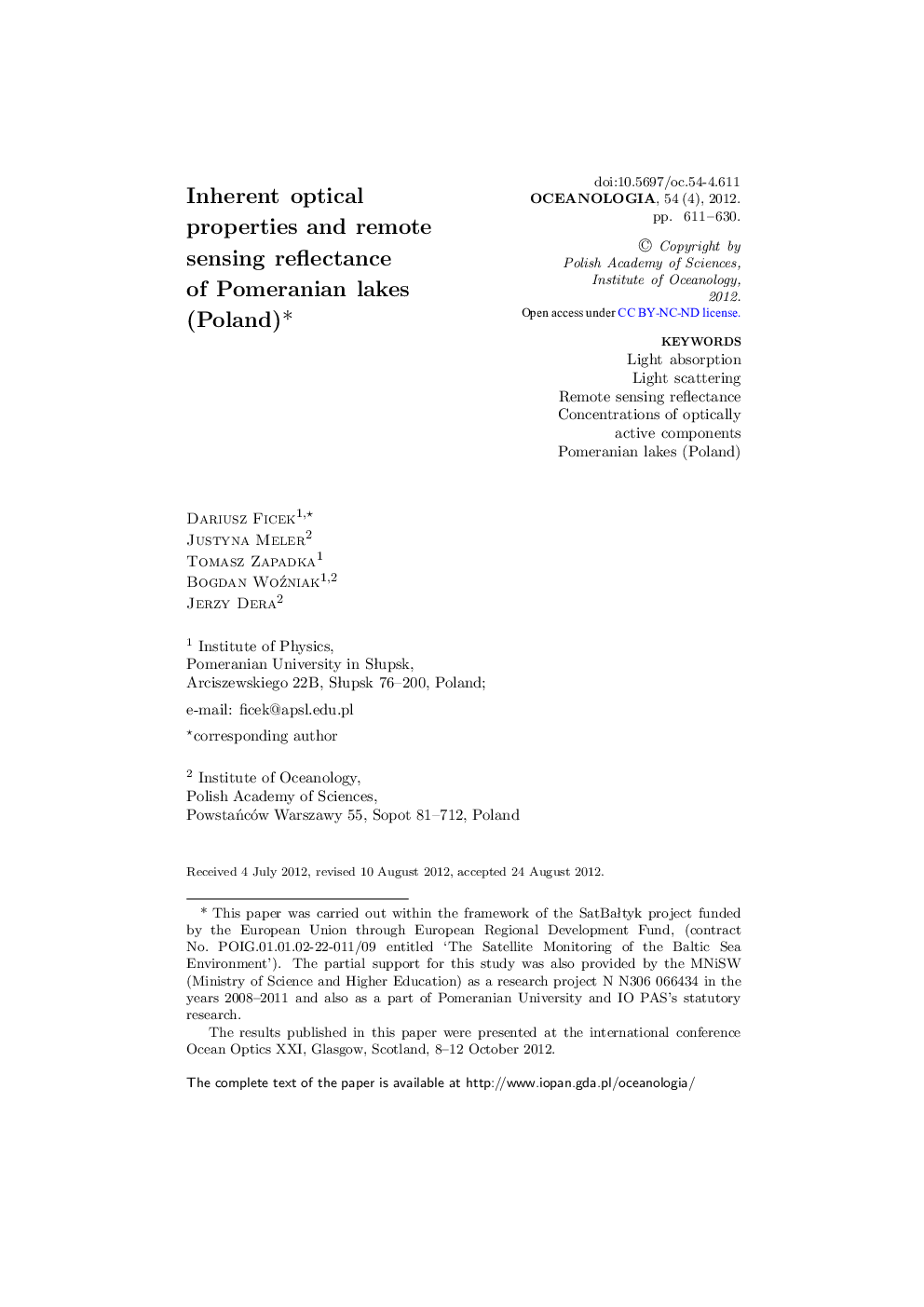| Article ID | Journal | Published Year | Pages | File Type |
|---|---|---|---|---|
| 2069733 | Oceanologia | 2012 | 20 Pages |
This paper describes the results of comprehensive empirical studies of the inherent optical properties (IOPs), the remote sensing reflectance Rrs(λ) and the contents of the principal optically active components (OAC) i.e. coloured dissolved organic matter (CDOM), suspended particulate matter (SPM) and chlorophyll a, in the waters of 15 lakes in Polish Pomerania in 2007–2010. It presents numerous spectra of the total absorption a(λ) and scattering b(λ) ≈ bp(λ) of light in the visible band (400–700 nm) for surface waters, and separately, spectra of absorption by CDOM aCDOM(λ) and spectra of the mass-specific coefficients of absorption a*(SPM)p(λ) and scattering b*(SPM)p(λ) by SPM. The properties of these lake waters are highly diverse, but all of them can be classified as Case 2 waters (according to the optical classification by Morel & Prieur 1977) and they all have a relatively high OAC content. The lakes were conventionally divided into three types: Type I lakes have the lowest OAC concentrations (chlorophyll concentration Ca = (8.76 ± 7.4) mg m−3 and CDOM absorption coefficients aCDOM(440) = (0.57 ± 0.22) m−1 (i.e. mean and standard deviation), and optical properties (including spectra of Rrs(λ)) resembling those of Baltic waters. Type II waters have exceptionally high contents of CDOM (aCDOM(440) = (15.37 ± 1.54) m−1), and hence appear brown in daylight and have very low reflectances Rrs(λ) (of the order of 0.001 sr−1). Type III waters are highly eutrophic and contain large amounts of suspended matter, including phytoplankton (CSPM = (47.0 ± 39.4) g m−3, Ca = (86.6 ± 61.5) mg m−3; aCDOM(440) = (2.77 ± 0.86) m−1). Hence the reflectances Rrs(λ) of these type of waters are on average one order of magnitude higher than those of the other natural waters, reaching maximum values of 0.03 sr−1 in λ bands 560–580 nm and 690–720 nm (see Ficek et al. 2011). The article provides a number of empirical formulas approximating the relationships between the properties of these lake waters.
